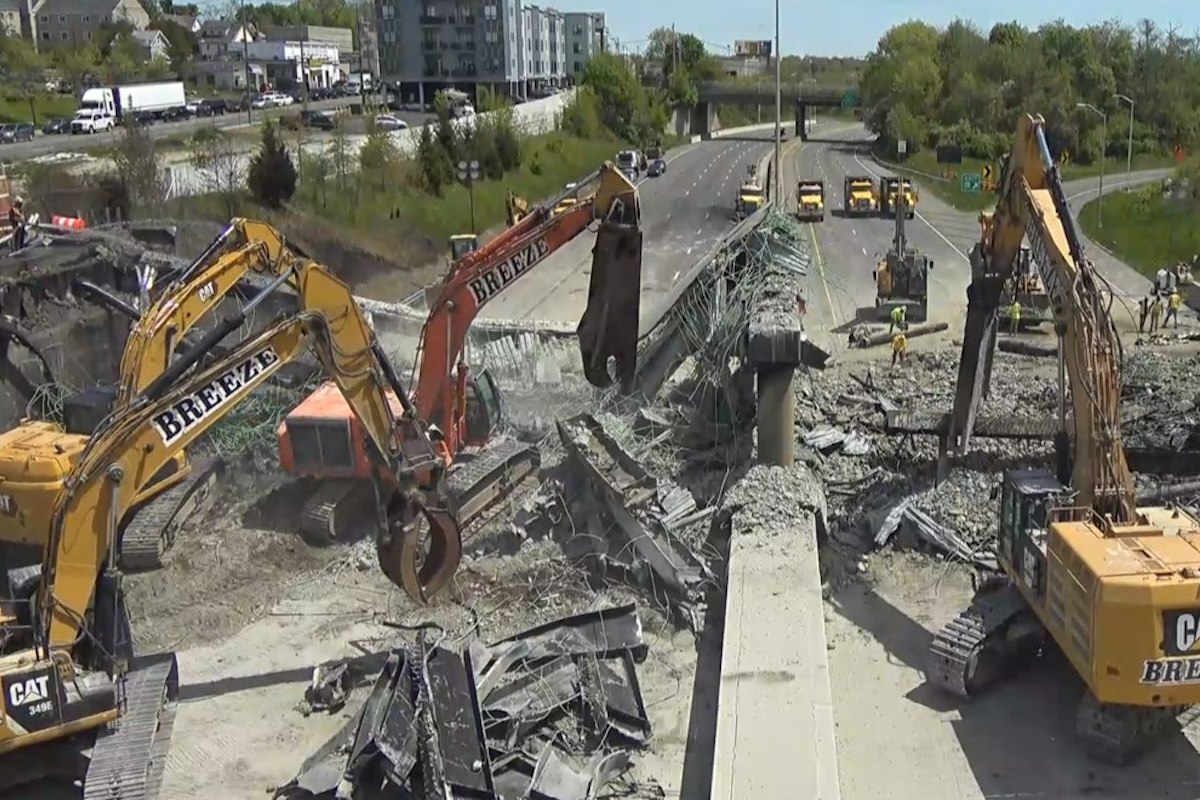When working with attachments, the standard rule of thumb is that a contractor should have three industry-specific attachments in their arsenal to succeed in a particular industry. For example, if a contractor is working in underground road work, they should consider investing in microtrenching attachments, coring attachments, and vacuum-lifting attachments, in addition to the standard forks, buckets, and grapples. This attachment variety will give them the ability to bid on the widest range of jobs in their preferred industry and will help keep them versatile and agile on the jobsite.
From a trencher to a bucket, auger or fork, there are many attachments available that can help operators get the most return on investment out of their stand-on skid steer.
Buckets
The bucket attachment is arguably the most popular attachment for stand-on skid steers. They help operators lift large piles of material or debris that need to be relocated or disposed. There are a variety of bucket types to choose from, depending on application. For example, dirt buckets are primarily used for transporting topsoil and backfilling. Grapple buckets come with hydraulic clamps to hold unstable material, making them ideal for tree care or landscaping. There are also high-capacity buckets, buckets with teeth for digging, and 4-in-1 buckets that are ideal for handling multiple projects on the jobsite.
Forks
A staple for any stand-on skid steer, pallet fork attachments are great for loading and unloading material from a trailer or truck bed and making material handling across tricky terrain easier and more efficient. A pair of pallet forks can help operators move a variety of materials like sod, bricks, trees, and ornamental garden boulders.

| Your local Case Construction Equipment Inc dealer |
|---|
| Beauregard Equipment |
| Monroe Tractor |
Trenchers
Trencher attachments offer a great alternative to needing a second machine on the job to open larger tracts of ground. Ideal for landscape, plumbing and electrical projects, a trencher attachment can install everything from irrigation and drainage systems to electric, utility or fiber. Most trencher attachments are available in 4-, 6- and 8-inch widths.
Augers
The auger attachment allows operators to quickly open holes in the ground for tree, fence, and deck post installation. This makes the auger attachment perfect for jobsites that require one hole or many of them. By using a stand-on skid steer attachment, operators have the maneuverability they need with more power than if they were using a hand-held auger machine. Operators can choose between direct drive and planetary attachments and different auger bit styles and sizes that range from 6 to 36 inches.
Rakes
Rake attachments are a landscaper’s best friend. They are an ideal attachment to clean, level, and prep jobsites. They are also a great tool to help smooth or loosen up the soil for sod or seed. The hydraulic requirements for most stand-on skid steers to run a box rake are 10 to 14 gpm, but machines that boast higher hydraulic horsepower will provide even more drum torque to break up hardpack or clay soils.
Microtrencher
Microtrenching is typically done in the gutter pan that parallels the road where the asphalt meets concrete of the curb. Microtrencher attachments are designed to cut both concrete and asphalt in controlled increments so contractors don’t need to stop traffic, saving on traffic redirection headaches and associated costs.
There are two typical blades that most microtrenching attachments will use. The first is a conical style bit that rotates in a holder and functions like a traditional rock saw. The second is a PDC blade, which is composed of diamond with carbide. The conical bits are generally the more affordable option between the two, but diamond PDC blades are growing in popularity due to its cleaner cut and longer lifespan. While a conical bit will be effective from 500 to 1,000 feet – meaning that contractors will likely need to replace bits daily – a diamond PDC blade will last up to 20,000 feet before it needs to be replaced.

| Your local Hyundai dealer |
|---|
| Equipment East |
Vibratory Plow
Ideal for residential fiber installation, cable and lawn irrigation, a plow attachment delivers the most power and reliability on tight jobsites. With two blades to choose from, the pull blade and feed blade – which can be adjusted between 6 and 24 inches – vibratory plows offer a cost-effective solution that can meet fiber installation-depth requirements in various areas.
Additionally, it’s important to take precautions when installing attachments. While attachments are built to have the ability to be switched, it is essential for operators to follow best practices to help maximize operator safety. For example, operators should always ensure the plate is clean and the pins holding the attachment are engaged. This reduces the risk of the attachment falling off while in motion. Operators should contact their local dealer to get trained on safely switching attachments.








































































